
Just about every player on this list has triggered a major overhaul of R&D in the past decade
Over the past nine years that I’ve been analyzing Big Pharma’s R&D numbers, there’s been some fluctuation in the top ten, but overall spending has remained fairly steady at roughly $70 billion a year.
Some big trends, though, emerge after you move beyond the top line number. Just about every player on this list has triggered a major overhaul of R&D in the past decade, shuttering facilities, laying off staffers, or at the very least chopping out core research areas and either narrowing their focus or adding new ones. (And it’s not over yet, as you can see from yesterday’s Merck reorganization story.) The turbulence has helped persuade a long list of top execs to leave the biggest companies and leap to the helm of biotech startups, which have been enriched by an IPO boom (now struggling) and a VC romp of historic proportions (not over yet). Cancer remains the Big Kahuna as new drugs offer dramatic breakthroughs, and some high drama, which is one reason why there is still lingering uncertainty over GSK’s decision to swap its late-stage and commercial assets for Novartis’s vaccines operation. Immuno-oncology in particularly is driving billions of dollars in new investments, and not just by Bristol-Myers and Merck.

John Carroll, Editor
We’ve seen the arrival of the first wave of biosimilars from the largest players, many of which are happy to invest in big Phase IIIs with an eye to grabbing a market niche for some of the world’s megablockbusters. Over the next 5 years, or less, that could destroy some old franchises, a notion which is lighting a fire under companies like AbbVie. While some of the biggest companies were waiting out the boom years, AbbVie couldn’t afford to wait, and it’s reached the point some analysts are starting to think they’re overpaying for new deals.
There are some big changes to note. An Aggressive J&J just barely edged out Novartis for the number 2 spot, a reflection of its global ambitions in drug R&D. Bristol-Myers also saw its spending spike as it engineered an overhaul aimed at retaining the lead in immuno-oncology.
I specifically wanted to add the last 5 companies to this list. Here you’ll find the Big Biotechs, companies like Celgene and Gilead. Backed by some incredibly profitable brands, these companies are demonstrating how smaller R&D budgets can often be used to translate into more exciting pipelines. Celgene is run by dealmakers, which hasn’t disappointed, and everyone is waiting to see what Gilead has to be working on.
Add it all up and you have $87 billion of R&D clout.
Expectations are high for all the companies on this list. Recent years have also seen a surge in new drug approvals. And the singular drugs that threaten to disrupt global markets still excite. The next 10 years could well be even better than the last.
— John Carroll, follow me on Twitter: @JohnCendpts
top pharmaceutical r&d spenders
- Roche: Being no. 1 means trying harder
- J&J: Global ambitions spur a worldwide hunt for new drugs
- Novartis: Quiet, fast and big
- Pfizer: The big one keeps getting away
- Merck: After a big year, still looking to be No. 1
- Bristol-Myers Squibb: The immuno-oncology leader is thinking big
- AstraZeneca: One step forward, two steps back
- Sanofi: The master R&D partner at work
- Eli Lilly: Progress, but is it enough?
- GlaxoSmithKline: Still can’t win respect
- AbbVie: A company in a hurry
- Amgen: Ready for another buyout
- Celgene: No fair prices, but lots of deals
- Takeda: A culture shift precedes R&D overhaul:
- Gilead: The 600-pound gorilla goes hunting
1. Roche: Being no. 1 means trying harder
- 2015: $9.67B (9.3B CHF overall, $8.1B pharma plus diagnostics)
- 2014: $9.25B (8.9B CHF overall, $7.9B pharma)
- Change: 4.5%
- As a percentage of revenue: 19%
- CMO: Sandra Horning
The big picture: Roche is facing off against looming biosimilar competition against three of its mainstay drugs—Herceptin, Rituxan and Avastin—by steadily funding one of the most ambitious R&D efforts in the world. And it’s been paying off.
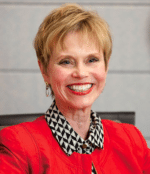
Sandra Horning, Roche Chief Medical Officer
In April there was an accelerated OK for venetoclax (Venclexta) for patients with chronic lymphocytic leukemia who have a chromosomal abnormality called 17p deletion. Venetoclax has racked up three breakthrough drug designations from the FDA, which helped it get whisked along the regulatory path with the FDA’s VIP program for top cancer drugs in the pipeline. This therapy is expected to earn in the rather exclusive neighborhood of $2 billion a year.
One of its biggest late-stage efforts has been reserved for Genentech’s atezolizumab, the first PD-L1 checkpoint inhibitor recently approved as Tecentriq for bladder cancer. Like PD-1 rivals from Bristol-Myers Squibb and Merck, the pharma giant has been funding a slate of additional studies.
But it could do even better with ocrelizumab, which has widely been tapped as the biggest thing in the industry’s late-stage pipeline. Rounding out the blockbuster lineup is ACE910 for hematology and lampalizumab, which could play a big role in dry AMD. Deutsche Bank analysts have projected lampalizumab’s peak sales potential at a megablockbuster level $6 billion.
That’s all music to the ears of Roche CEO Severin Schwan, who told Reuters recently that he was able to sleep better at night after the success of atezo along with progress on some of its other franchise drugs. And the pharma giant has been making significant progress with its focus on targeted cancer drugs, with a combination of Cotellic and Zelboraf making progress in Europe last year as Alecensa moved forward at the FDA for ALK-positive non-small cell lung cancer.
It hasn’t all been a bed of roses in R&D, though.
Roche has tried, and largely failed, to make significant headway in Alzheimer’s disease. But the company has persisted with a kind of grim determination. It was greeted with a major setback on crenezumab, partnered with AC Immune, which failed a recent study. But the company was inspired by indications of its potential as well as Biogen’s work in the field to push ahead into a pivotal study. It even chose to continue work on gantenerumab, a MorphoSys drug that flat failed.
Roche took a major risk when it acquired Genentech back in 2009. But it’s paid off, allowing the company to play a big role in oncology during a period of upheaval.
2. J&J: Global ambitions spur a worldwide hunt for new drugs
- 2015 R&D spending: $9 billion
- 2014 R&D spending: $8.5 billion
- Change: +6%
- As a percentage of revenue ($70B): 13%
- R&D chief: Paul Stoffels
The Big Picture: Over the past year, J&J has been pushing hard on the drug development front. Now that its global deal teams are all in place, the pharma giant has reached into all the major, and many minor, biotech hubs around the planet to source new programs.
For the drug development team, that meant an extra $600 million in expenses in 2015 when compared to 2014. Spending on the devices side of the research business remained flat as J&J went on to reorganize that disappointing side of the organization.
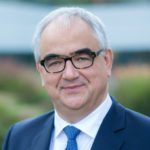
Paul Stoffels, Executive Vice President, Chief Scientific Officer, Johnson & Johnson
R&D chief Paul Stoffels has remained a busy player in the cancer drug arena. In March, the company followed up with its second deal with MacroGenics, committing $75 million upfront as it sought to pursue an alternative to the CAR-Ts that rivals have been advancing in adoptive T cell research. And a month later it struck a $500 million package deal for Tesaro’s late-stage cancer therapy as it looked to beef up its work in prostate cancer, where it’s made major inroads with Zytiga.
J&J could only have been pleased to see Tesaro’s impressive pivotal data in ovarian cancer, which leaves it as the frontrunner among a group of 4 PARP inhibitors.
J&J’s R&D group, though, likes to play some cards close to its vest, particularly when they’re playing in a competitive late-stage field. Two years ago it bought out Aragon in a heavily fronted $1 billion deal so it could put its hands on ARN-509, also for prostate cancer. But they’ve been reluctant to discuss it much as the drug plays out in two big Phase III studies. Meanwhile, its late-stage pipeline also includes the anti-inflammatory IL-23 drug guselkumab, in a crowded field, as well as esketamine, its own take on ketamine for depression.
Demonstrating once again how J&J only likes to talk about certain things, the company recently stopped work on the anti-NGF pain drug fulranumab with no explanation.
There are plenty of early-stage deals working as well. Stoffels enjoys announcing these pacts in big batches as J&J continues to play a leading role on the BD front. Its growing, $9 billion budget 2015 R&D budget signals that there are many more contracts in the works.
3. Novartis: Quiet, fast and big
- 2015 R&D spending: $8.9B
- 2014 R&D spending: $9B
- Change: – 1%
- As a percentage of revenue ($49.4B): 18%
- R&D chiefs: NIBR chief Jay Bradner, CMO Vas Narasimhan
The big picture: For a Big Pharma company with the second largest R&D budget in the industry, Novartis can move very fast, if it decides to.
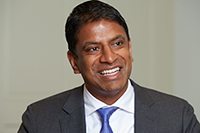
Vasant Narasimhan, Global Head Drug Development and Chief Medical Officer for Novartis
So it was no great surprise to see the pharma giant wrap a late-stage program for its CDK 4/6 cancer drug LEE011 (ribociclib), now headed to a showdown with Pfizer (on the market with palbociclib) as well as Eli Lilly. It’s clear that Novartis’ Sandoz will bull ahead into the biosimilars market, looking to topple some major franchises with less expensive copycats.
Novartis also has been achieving results for drugs like PKC412 (midostaurin) and other therapies that you’ve probably heard much less of. While Novartis moves quickly on deals, like its investment and collaboration with Intellia, partnering on a promising CRISPR Cas9 approach to gene editing, the company can also be extraordinarily low key about its top drug prospects.
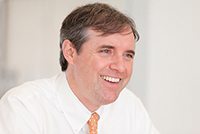
James Bradner, President, Novartis Institutes for BioMedical Research (NIBR)
That might be changing, though, now that Jay Bradner has taken the top position at the Novartis Institutes for Biomedical Research in Cambridge, MA, with Vas Narasimhan moving into the top job in development. Bradner, the young, impressive ex-Harvard professor knows his stuff, and demonstrates lots of enthusiasm for top projects. Narasimhan is an up-and-comer with some big tasks to perform, helping execute an over-arching strategy to winkle out a billion dollars in annual costs. (That’s classic Novartis style: spend big but leave no rock unturned in search of greater efficiency.)
We’ll keep our fingers crossed here at Endpoints that some greater transparency may lie ahead of Novartis.
Last year Novartis scored approvals for Entresto and Cosentyx, plus the very first FDA nod for a biosimilar. It may not do as well this year. But big things are cooking at Novartis.
4. Pfizer: The big one keeps getting away
- 2015 R&D spending: $7.7 billion
- 2014 R&D spending: $8.4 billion
- Change: -8%
- As a percentage of revenue: 15.7%
- R&D chief: Mikael Dolsten
The big picture: Pfizer gets little respect for its R&D effort, but it’s important to remember the pharma giant delivered the real goods in 2015 with an accelerated approval for the CDK 4/6 drug palbociclib (Ibrance). The drug was every bit the breakthrough the FDA had designated it as, and there are some major sales goals in mind, even though competition is looming.
Palbociclib will likely one day face competition from Lilly and Novartis. Lilly in particular is aiming at proving it can do palbo one better with abemaciclib.
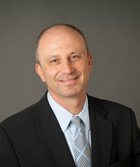
Mikael Dolsten,
President, Worldwide Research & Development, Pfizer
So what has Pfizer done for investors recently? It acquired Hospira and a pipeline of late-stage biosimilars that are looking increasingly de-risked. There’s a pain drug, tanezumab (an anti-NGF drug partnered with Eli Lilly), that has real potential now that the sector is back on track. There’s a PD-L1 drug, avelumab, which may qualify as the 5th checkpoint drug to make it onto the market.
Pfizer paid a record $850 million upfront to partner with Merck KGaA on avelumab, signaling its willingness to pay top dollar for everything it deems worthy. But wherever Pfizer turns now, it’s looking at some major league competition, from biosims through pain to cancer.
Pfizer CEO Ian Read has set his sights on a megamerger twice, and twice been forced to retreat. The company will be forced to prove at some point that it can pull off a string of important approvals on its own. They employ some of the smartest people in the drug development business. And even after a top-to-bottom R&D reorg a few years ago, Pfizer still ranks comfortably among the top 10 spenders.
But at this rate, Pfizer has a long way to go before it earns the kind of respect a $7.7 billion budget should warrant.
5. Merck: After a big year, still looking to be No. 1
- 2015 R&D spending: $6.7 billion
- 2014 R&D spending: $7.2 billion
- Change: -7%
- As a percentage of revenue: 17%
- R&D chief: Roger Perlmutter
The big picture: 2015 proved to be a big year for Merck and its research chief Roger Perlmutter. The company scored a big win with the approval for Keytruda, a trailblazing PD-1 checkpoint drug that promises to help revolutionize the way cancer is treated. The company finally got sugammadax approved at the end of 2015 — after three straight rejections over the years. And it had rolled up to the threshold of an approval for Zepatier, a combo cure for hepatitis C, which came soon after the New Year arrived.
Merck has been making a game fight over the checkpoint market with the leader in the field, Bristol-Myers Squibb. It hustled out stellar lung cancer data just days ago and CEO Ken Frazier recently noted that the company will spend $2 billion this year alone on Keytruda-related research, but a lot of analysts believe the market-leading Bristol will continue to overshadow the company.
In the novel drug ballpark, Merck is taking some home run swings.
It has a huge, and what is widely considered nearly hopeless, attempt to get anacetrapib over the finish line. This is the last of four CETP inhibitors, and the last to size up data from a massive CV outcomes study. The other three all went down in flames. And Perlmutter won’t get the blame if this legacy program flops as well.
MK-8931 (verubecestat) is the leading BACE drug for Alzheimer’s, looking to make a difference in what is perhaps the largest potential market for any new drug. Alzheimer’s though, has proven to be a riddle that has defeated every significant R&D effort of the past decade.
There’s even a largely forgotten osteoporosis drug, odanacatib, in the pipeline.
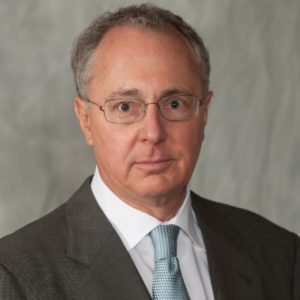
Roger M. Perlmutter, Merck, Executive Vice President and President of Merck Research Laboratories
Merck went through a long dry spell in the clinic before it started to turn things around with Keytruda. But the drug didn’t arrive in time to stop an R&D reorganization that claimed thousands of jobs, and which was followed up this week with news of another round as the pharma giant concentrates its forces in San Francisco and Cambridge, MA. Now, though, it has to see if it can do better than a solid second, or weak third, in the markets it tackles.
In the meantime, the deal team hasn’t been particularly busy since the $10 billion Cubist buyout, though there has been the occasional pact to underscore Perlmutter’s enthusiasms for new technology.
The jury is still out on Merck. A big win, or two, would go a long way to resolving lingering doubts.
6. Bristol-Myers Squibb: The immuno-oncology leader is still thinking big
- 2015 R&D spending: $5.9B
- 2014 R&D spending: $4.5B
- Change: 31%
- As a percentage of revenue ($16.5B): 36%
- R&D chief: Francis Cuss
The big picture: About a year ago, Bristol-Myers Squibb joined just about every major pharma group in pulling off a countrywide reorganization of its R&D organization. Early-stage virology research went out the window as Bristol-Myers looks to concentrate more of its staff in Cambridge, MA and the Bay Area – covering the two big hubs on both coasts.
It’s been beefing up its staff in particular on the West Coast, where it’s been devoting a significant extra effort on immuno-oncology. It’s clear that Bristol-Myers plans to remain the big dog in checkpoints and checkpoint combos. And it’s no surprise that their checkpoint drug Opdivo (nivolumab) has won 6 breakthrough drug designations.
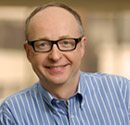
Francis Cuss, Bristol-Myers Squibb Chief Scientific Officer, R&D
They demonstrated that commitment again recently when Bristol-Myers completed a $520 million deal to buy Cormorant and its IL-8 tumor microenvironment drug. The push now is to find new combos that can really amp up the attack on cancer cells.
Bristol-Myers’ dealmakers like to stay practical. If they see a competing program that’s further ahead of theirs, they’ll buy it. That’s what led to the Padlock acquisition.
They’ve been a very focused, very results-oriented operation for years now. That’s why they’re disengaging from virology. If they’re not getting the results, they’ll look for new opportunities to either build on a lead or create a market-leading opportunity.
It’s also clear from the big surge in R&D spending last year that the company is willing to spend big to fuel growth.
7. AstraZeneca: One step forward, two steps back
- 2015 R&D spending: $5.6 billion (non-GAAP, core spending)
- 2014 R&D spending: $4.9 billion
- Change: 14%
- Spending as a percentage of revenue: 25% (23.6B)
- R&D chiefs: Sean Bohen, Bahija Jallal, Mene Pangalos
The big picture: With AstraZeneca, it always seems that every step forward is dogged by two steps back. And it’s been doing a lot of stepping in the 4 years since Pascal Soriot took over.

Mene Pangalos, Executive Vice-President, IMED Biotech Unit
The R&D group gained a huge win with the approval of Tagrisso (AZD9291), gaining an accelerated approval in record time. Rival Clovis unintentionally helped by orchestrating a midair explosion at the FDA.
Meanwhile, AstraZeneca’s PD-L1 checkpoint inhibitor durvalumab has slid to a weak fourth place position, which continues to narrow its potential as the three leaders – Bristol-Myers, Merck and now Roche – surge forward in the market. Fourth place is not where AstraZeneca needs to be right now.

Sean Bohen, Executive Vice President of Global Medicines Development and Chief Medical Officer.
It was downright embarrassing, though, to have the FDA reject ZS-9 after buying the drug during the regulatory review phase. AstraZeneca is evidently going to have to resolve some manufacturing issues ahead of a formal decision, but this is one big player that can ill afford to wait for anything.
There can be no doubt of the urgency of the situation. AstraZeneca has been pummeled by generic competition and Soriot was faced with the weakest pipeline in the top 10 when he took over. He’s steered the company into a blizzard of new deals, and presented management with a near-impossible goal of achieving $45 billion in sales in 2023.
A few days ago, AstraZeneca made a desperate bid to block generic competition to Crestor, arguing that the approval to use the drug to treat homozygous familial hypercholesterolemia, dangerously high levels of cholesterol, should give it an extra 7 years of market protection. They made a weak safety argument, but most analysts saw it for what it was: a latch-ditch effort to safeguard the source of $5 billion of the $23 billion it made last year.

Bahija Jallal, Executive Vice-President of MedImmune, a subsidiary of AstraZeneca
AstraZeneca has a bad habit of insisting that it loves its drugs, right up until they dump them. That happened to brodalumab and it partly just occurred with tralokinumab, now that it outlicensed the rights for atopic dermatitis, where it looked weak.
But you can’t deny that the eliminate-the-weakest strategy makes sense. If something in R&D doesn’t cut it, it has to go, which is why AstraZeneca downsized early-stage antibiotic research in Massachusetts and spun the remnant out as a biotech company.
AstraZeneca does have benralizumab being prepped for a regulatory filing after wrapping a positive Phase III program, but most analysts only see it offering a fraction of the $2 billion in peak sales that the company provided in 2014.
Taken altogether, this is not a picture of a company on the way to meeting a very ambitious set of sales goals. On the other hand, it still has the kind of clout needed to make a major difference in the R&D arena. The right buyout (Medivation, perhaps?) would help its commercial operations as well as its late-stage pipeline.
Don’t count it out.
8. Sanofi: The master R&D partner at work
- 2015 R&D spending: $5.6B (5B euros)
- 2014 R&D spending: $5.15B (4.6B euros)
- Change: 8.7%
- As a percentage of revenue ($38.6B): 14.7%
- R&D chief: Elias Zerhouni
The big picture: On its own, Sanofi R&D hasn’t had a heck of a lot to boast about in recent years. In partnership with Regeneron, though, the pharma giant has been scoring some groundbreaking wins on the R&D side. And it’s looking to use its collaborative model to expand on its platform strategy with more big wins in the years ahead.

Elias Zerhouni, President of Global Research and Development, Sanofi
EP Vantage listed their IL-4/IL-13 contender dupilumab as a top 5 Phase III drug, which some analysts believe can earn as much as $2.5 billion for eczema and asthma. Another partnered therapy, the IL-6 drug sarilumab, is also often tapped as a potential blockbuster.
Both of these drugs follow the pioneering approval of Praluent, their PCSK9 cholesterol drug that has been challenged by Amgen, which claims the rival drug infringed on its patents.
Sanofi R&D chief Elias Zerhouni is a big believer in platform partnerships. And it many ways, he has had to be. The company tried, and largely failed, to restructure its unproductive French research operations under Chris Viehbacher’s lead. Since then, it’s been leaning heavily on its U.S. operations and partners for innovation.
The company was forced to downsize its internal oncology efforts after a key setback and little progress. But now the company’s new CEO, Olivier Brandicourt, has his eyes set on a takeover at Medivation, which would deliver Xtandi as well as a closely-watched late-stage PARP inhibitor (talazoparib) in a hotly contested sector of cancer drug development.
Sanofi Elias Zerhouni is adamant that partnering with platform companies offers the best path to new drug approvals. His rule:“Every company that acquires a platform company kills it.” And he has big hopes that a top-to-bottom reorganization of internal R&D operations will make their own pipeline ops more productive as well. But either way, Zerhouni has found a strategy that works. And he’s sticking with it.
9. Eli Lilly: Progress, but is it enough?
- 2015 R&D spending: $4.8 billion
- 2014 R&D spending: $4.73 billion
- Change: +1%
- As a % of revenue: 24%
- R&D chief: Jan Lundberg
The big picture: A couple of years ago, Eli Lilly had gone so long without a significant drug approval, it was easy to dismiss this top-10 R&D spender as an insignificant force. But recently, Lilly has been making some serious noise in the development arena, and it’s no longer just forced enthusiasm in the wake of failure.
Jardiance helped enormously when the SGLT2 proved last fall that it could significantly lower the risk of cardio events by 14% among high-risk diabetics. The data on reduced hospitalization and reduced mortality were even better. But then there’s the, yes, but, that often follows progress at Lilly.
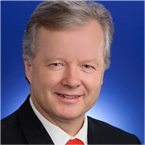
Jan Lundberg, Executive Vice President, Science and Technology, and President, Lilly Research Laboratories
Yes, but: Lilly and its partner Boehringer Ingelheim barely managed to eke out a narrow panel vote favoring a change of label that could make an enormous difference in Jardiance sales. Some of the experts were rankled they didn’t get two confirmatory studies, as was normally required.
In addition, there was a big win for ixekizumab, a potential blockbuster approved for psoriasis and sold as Taltz. But – it follows Novartis into the market and still has rivals from J&J and Merck in hot pursuit.
Great things are expected of baricitinib for rheumatoid arthritis. But, this is one of the most hotly competitive fields in R&D.
A lot of Lilly’s rep in R&D will also rest on its late-stage CDK 4/6 cancer drug abemaciclib. If that comes in as a preferred winner in the field, the drug could make a major difference for Lilly. But – it’s not a foregone conclusion.
Then there’s Alzheimer’s, which is riddled with caveats for Lilly. Solanezumab already failed, spectacularly, in Phase III and the BACE drug in the pipeline is another speculative play. Curiously, Lilly is already trying to back off a key endpoint in its sola studies, with no assurances that the FDA will play along. But, if either of these drugs works in late-stage trials, even marginally, it would have a swift and potentially enormous impact on the company’s bottom line.
Lilly’s R&D operation has made a comeback. But analysts are looking for much better things to come. The jury is still out, and the verdict can’t be assumed.
10. GlaxoSmithKline: Still can’t win respect
- 2015 R&D spending: $4.38B (3.09B pounds)
- 2014 R&D spending: $4.4B (3.1B)
- Spending as a percentage of revenue: 12.9%
- R&D director: Patrick Vallance
The big picture: GlaxoSmithKline knows what it’s like to experience bitter setbacks. But when investigators fail to find what they hoped for, this company also doesn’t hesitate to dump a failure and move on.
In that spirit, drisapersen, MAGE A3 and darapladib all disappeared. But that was awhile ago, now. In the followup, GSK joined the list of companies undergoing an R&D overhaul in the U.S. Its asset swap with Novartis left it with a less exciting, but reliable, vaccines group, where Moncef Slaoui is now the chief, until his retirement next year.
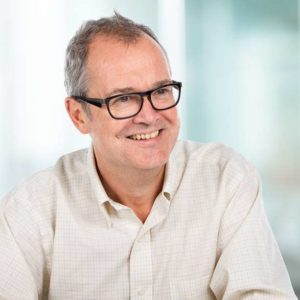
Patrick Vallance, President, Pharmaceuticals R&D
Without a lot to excite investors, GSK wisely opted to hang on to its big HIV play at ViiV, where it holds a majority interest and continues to make progress in R&D. It’s also scored solid Phase III data for sirukumab, its IL-6 drug for RA, with the kind of late-stage program that virtually assures a near-term approval. GSK also recently became the first Big Pharma to win an approval for a gene therapy — in the EU — marking a significant advance in the field. And it beefed up its respiratory group with last fall’s FDA OK for the asthma drug mepolizumab, which also has potential in other lucrative indications.
None of that, though, has soothed analysts, who see a major corporation without the kind of pipeline that can deliver megablockbuster drug candidates. By normal standards, that would indicate that something big should be in the deal works. But with the focus now on a major shift with a new CEO and top execs expected to move in, there’s no guarantee that GSK will do something seismic this year. Patience is wearing thin.
11. AbbVie: A company in a hurry
- 2015 R&D spending: $4.28B
- 2014 R&D spending: $3.3b
- Change: 30%
- As a percentage of revenue: 18%
- R&D director: Michael Severino
The big picture: It’s no surprise seeing AbbVie’s R&D budget shoot up in 2015. This company has the $14 billion drug Humira going for it – and against it. With generic competition (likely) on the horizon, AbbVie has to move fast to build the pipeline, win approvals and build new sales. Humira delivers well over half of its annual revenue.
That’s a big task.

Michael Severino, Executive Vice President, Chief Scientific Officer, AbbVie
AbbVie in turn has been wheeling and dealing its way through the industry. Its big, $10 billion play for Stemcentrx and Rova-T (rovalpituzumab tesirine) immediately raised eyebrows at the cost and the potential benefit to patients.
AbbVie and its partner Biogen won a recent approval for the MS drugZinbryta (daclizumab), but it won’t be an overnight wonder, more likely to build sales over time. The company (with its partner Roche) will likely do much better with Venclexta (venetoclax), approved in April for chronic lymphocytic leukemia for patients who have a chromosomal abnormality called 17p deletion. It’s won three breakthrough designations and analysts expect it to earn $2 billion a year.
Then there have been a string of oncology deals, including a pact with argenx, stretching back to its $21 billion deal to acquire Pharmacyclics.
AbbVie doesn’t mind walking away from a deal that no longer suits its immediate needs. Infinity Pharmaceuticals found that out the hard way when their lead drug for indolent non-Hodgkin lymphoma hit the endpoint in a critical study, but fell short of expectations for what would be needed in the marketplace. And now it faces the same kind of fish-or-cut-bait decision after Ablynx delivered positive but ho-hum data for their partnered drug on rheumatoid arthritis, the IL-6 drug vobarilizumab (ALX-0061).
AbbVie already has an in-house program they’re hot about.
The point here is that AbbVie is a company on the move. It illustrated its commitment to speed with the $350 million purchase of a priority review voucher last year that shaves 4 months off the review process.
Time is a commodity that AbbVie cannot afford to squander.
A few days ago the FDA essentially blessed Amgen’s biosimilar of Humira, giving it a clean bill of health for the full slate of indications now approved in the U.S. The day is coming when the company will face off against cheap knockoffs. And that sets the stage for even more dealmaking in the year to come.
12. Amgen: Ready for another buyout
- 2015 R&D spending: $4.07 billion
- 2014 R&D spending: $4.27 billion
- Change: – 4%
- As a percentage of revenue: 18.5%
- R&D director: Sean Harper
The big picture: There aren’t a lot of major experimental drugs to watch in Amgen’s late-stage pipeline, but they do present a positive picture.
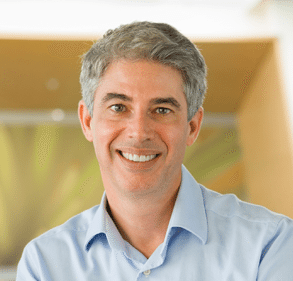
Sean Harper, Executive Vice President, Research and Development
Erenumab, or AMG 334, is now in Phase III, scoring positive Phase II data for reducing migraines and possibly positioning itself as a leader in a Calcitonin-Gene-Related-Peptide (CGRP) receptor race that pits the Big Biotech against Teva, Alder and Eli Lilly. Late-stage data is due later in the year and you can expect Amgen to take it straight to the FDA.
Then there’s its osteoporosis drug romosozumab, another rival-infested arena where Amgen hopes to do well. This is another potential blockbuster, unless Radius Health’s ($RDUS) abaloparatide overshadows it on the market. And its biosimilar of Humira looks to be on a glide path to an approval, with AbbVie’s legal counterattack looming as the biggest obstacle to getting it on the market.
Amgen has delivered approvals for drugs like Repatha, its PCSK9 trailblazer, as well as Imlygic, the first oncolytic viral therapy — but almost certainly not the last.
That’s all well and good, but Amgen hasn’t done a major deal since it acquired Onyx for $10 billion three years ago. Since then, it shut down the old Onyx campus and reorganized R&D, cutting research jobs in the process. And its CEO is a careful dealmaker who has reined in R&D expenses while waiting for some equally good deals to come his way. That’s why the company is routinely mentioned among the hunters in the market. Chances are, when Amgen does strike, it will look to make a play on a marketed drug, or a very late-stage asset that looks like a winner at the FDA. Or preferably both.
Valuations are down in biotech, making this as good a time as any for pursuing a deal. I wouldn’t expect Amgen to sit around for much longer.
13. Celgene: No fair prices, but lots of deals
- 2015 R&D spending: $3.7 billion
- 2014 R&D spending: $2.4 billion
- Change: +54%
- As a percentage of revenue: 40%
- R&D director: Rupert Vessey
Celgene cited its big upfront payments as one of the reasons for the big surge in R&D spending in 2015. And that can come as no surprise to anyone tracking one of the most ambitious Big Biotechs in the industry.
The biotech has been blazing a big, wide trail on the dealmaking front. Recently, it retooled its collaboration with Agios, spending $200 million upfront on the new arrangement. But that’s just the latest in a series of high-profile pacts.

Rupert Vessey, Executive Vice President and President, Research and Early Development
Celgene paid $7.2 billion to acquire Receptos, bagging RPC1063, a promising oral treatment now in Phase III development for ulcerative colitis and multiple sclerosis. And a year ago Celgene paid a billion dollars in a big upfront and equity deal to align itself with Juno Therapeutics, which is under a cloud now following the death of three patients in their most advanced CAR-T study.
In the meantime, George Golumbeski has been steadily inking smaller deals, often preferring to take an option in development efforts and waiting to see how the biotechs fare in the clinic.
Celgene Executive Chairman Bob Hugin likes to say that there’s really no such thing as a fair price in biotech. Just about whatever you pay, if it fails it was way too expensive, and if it works, it was cheap. The one sin in his book is doing nothing, especially when you have a franchise drug (Revlimid earned $5.8 billion last year) to pay the way for R&D to do more and better work.
There’s no sign that that aggressive spirit is taking a holiday anytime soon.
14. Takeda: A culture shift precedes R&D overhaul
- 2015 R&D spending: $3.5 billion
- 2014 R&D spending: $2.9 billion
- Change: +20%
- As a percentage of revenue: 21%
- R&D director: Andrew Plump
These numbers are a bit dated, frankly. Takeda reports on a fiscal year basis that ends mid-year, so this has a lot to do with 2014.
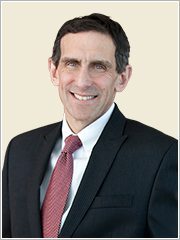
Andrew Plump, Takeda Chief Medical and Scientific Officer
Takeda has been scouring the planet to new drugs for its gastro portfolio. That quest recently led it to an option deal to acquire Altos Therapeutics. More recent deals include a pact with Theravance as well as a $400 million partnership with TiGenix for its stem cell therapy Cx601, in studies for treating fistulas in patients with Crohn’s disease. And it set aside $65 million in near-term funding to pay for a rare disease alliance with Ultragenyx.
Takeda marked a major cultural shift when it named Christophe Weber as its new CEO in the spring of 2015. Japanese pharma companies are not known for making even modest cultural adjustments, so naming a Westerner as its new chief confounded some company observers. You could make a case that Weber has proceeded, rather cautiously, to make the company over with a more ambitious strategy focused carefully on oncology and gastroenterology. But it will have to do much more in R&D to catch up with its U.S. and European rivals.
15. Gilead: The 600-pound gorilla goes hunting
- 2015 R&D spending: $3 billion
- 2014 R&D spending: $2.85 billion
- Change: +5%
- As a percentage of revenue: 9%
- R&D director: Norbert W. Bischofberger
Judged by market cap, Gilead is punching way above its R&D weight. Curing hepatitis C with a trailblazing new cocktail comes with a hefty price, and this is one heavyweight that will never miss a punch on sales.
Sovaldi got it all started, but Gilead just days ago got an approval for its latest cocktail, Epclusa, which was remarkable primarily because it marked the entry of another significant discount as competition in the field continues to heat up.
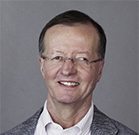
Norbert W. Bischofberger, Executive Vice President, Research and Development and Chief Scientific Officer, Gilead
Gilead built its R&D house on a foundation of HIV drugs, and it’s continued to make hay with new arrivals on that front as well. But Zydelig (idelalisib) got hit with a recent setback after Gilead was forced to halt 6 studies following signs of serious side effects.
Gilead still knows how to do a splashy deal. It paid Galapagos $725 million in an upfront and equity buy to partner on filgotinib, the rheumatoid arthritis drug that AbbVie dropped in favor of its in-house program.
So what’s left to talk about in the pipeline?
Not a huge amount, which is why all the analysts for months now have been buzzing about how badly Gilead needs a major buyout. Hep C has been huge, but it’s fading. That leaves Wall Street wondering how the company can jazz earnings in the future. Gilead has plenty of cash on hand to do a deal. And after all these months, analysts want to see if they can do something big, and exciting.
Expectations are sky high, though, so any misstep will be punished instantly.
Gilead’s R&D group is notoriously hard to talk to. The company has been subjected to harsh, predictable criticism for its strategies and pricing policies. But Gilead is the 600-pound gorilla in its sphere. It doesn’t explain and it doesn’t complain. But it does perform.


